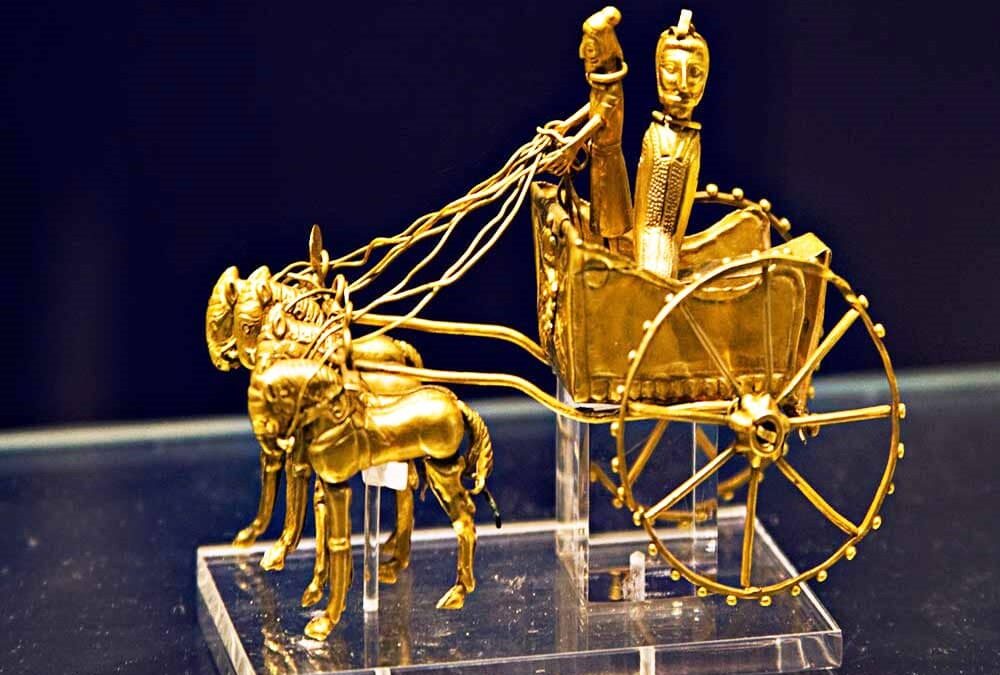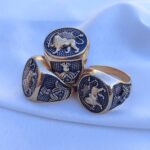
Symbols and Meanings in Iranian Jewelry
Historically known as Persia, Iran has long been a hub of art, culture, and craftsmanship. Among its many artistic achievements, jewelry-making is one of the most enduring and exquisite traditions. For centuries, Iranian artisans have created stunning pieces that reflect the region’s rich history, culture, and intricate artistry. Let’s dive into the roots of Iranian jewelry-making and explore how this tradition has evolved over millennia.
1. The Ancient Origins of Iranian Jewelry
The tradition of jewelry-making in Iran dates back to ancient civilizations such as the Elamites, Achaemenids, and Sassanids. Archaeological excavations have revealed gold and silver ornaments that date back over 5,000 years, highlighting the long-standing appreciation for craftsmanship and beauty in the region.
Elamite Jewelry (2700–539 BCE)
The Elamites, one of the earliest civilizations in Iran, were skilled in the art of metalwork. Elamite jewelry often featured golden beads, pendants, and earrings, showcasing their ability to work with precious metals. The designs were often inspired by nature, with motifs such as flowers and animals.
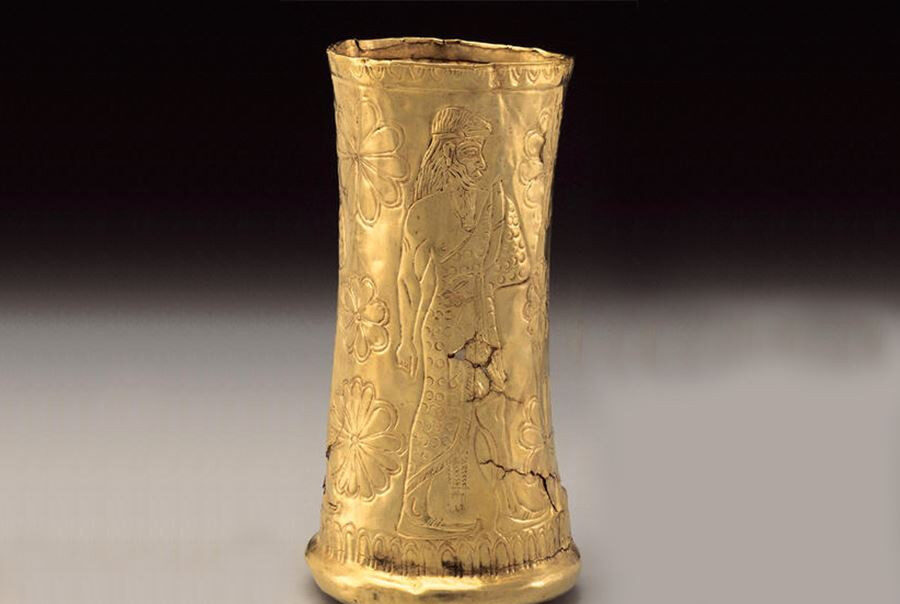
Elamite Jewelry
Achaemenid Empire (550–330 BCE)
During the time of the Achaemenid Empire, jewelry-making became even more refined. The Achaemenid kings were known for their vast wealth, and jewelry played a significant role in displaying their power and status. Gold and silver were extensively used, and many pieces were adorned with precious gems like lapis lazuli, turquoise, and agate. The intricate designs from this era often depicted royal symbols like lions, winged griffins, and other mythical creatures.
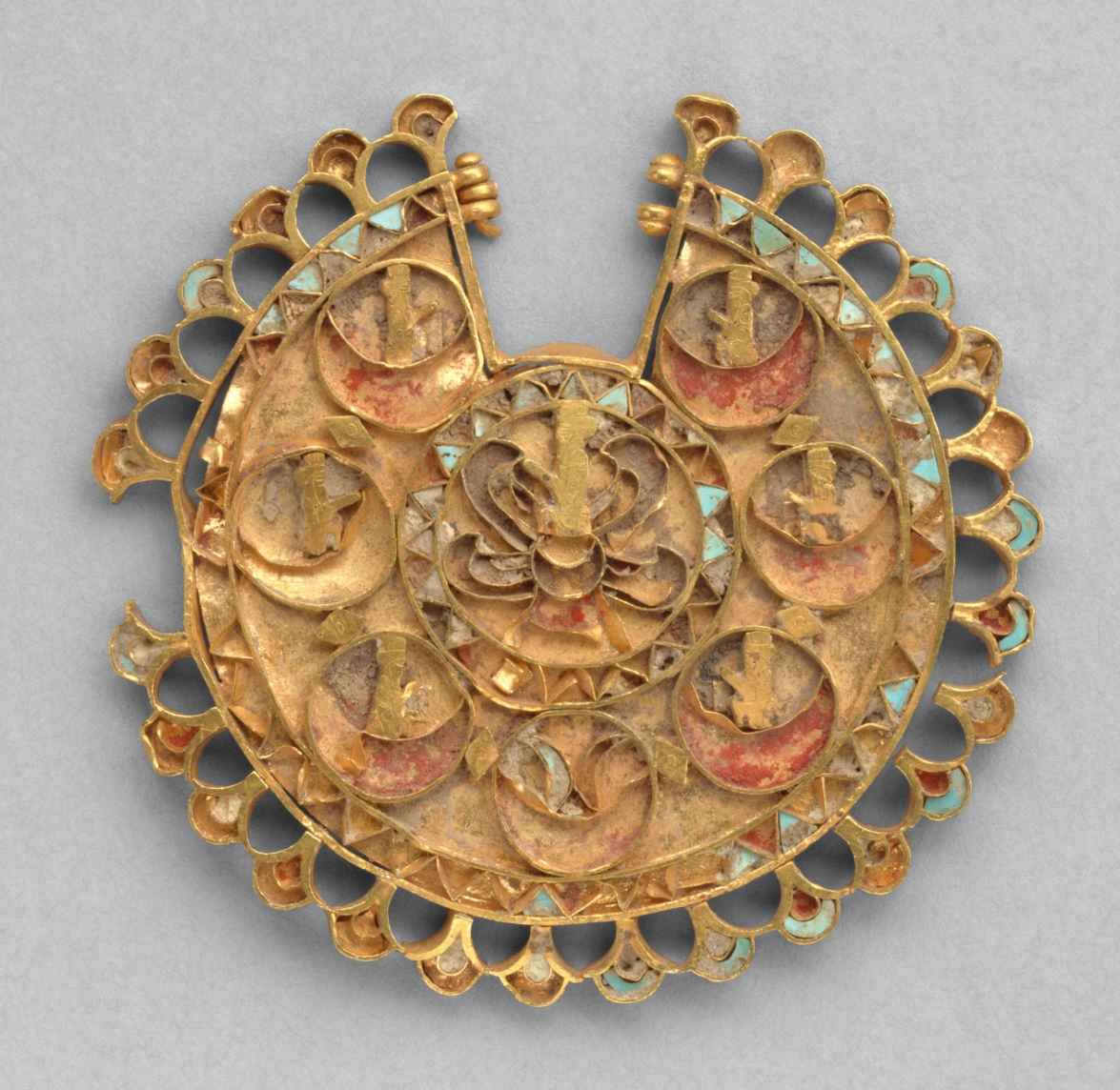
Achaemenid Empire Jewelry
Sassanid Era (224–651 CE)
The Sassanids brought a new level of sophistication to Iranian jewelry-making. Their artisans crafted brooches, earrings, and necklaces that were rich in both material and symbolism. One distinctive feature of Sassanid jewelry was the use of garnets, pearls, and sapphires to create colorful, detailed pieces that celebrated both royalty and religious themes.
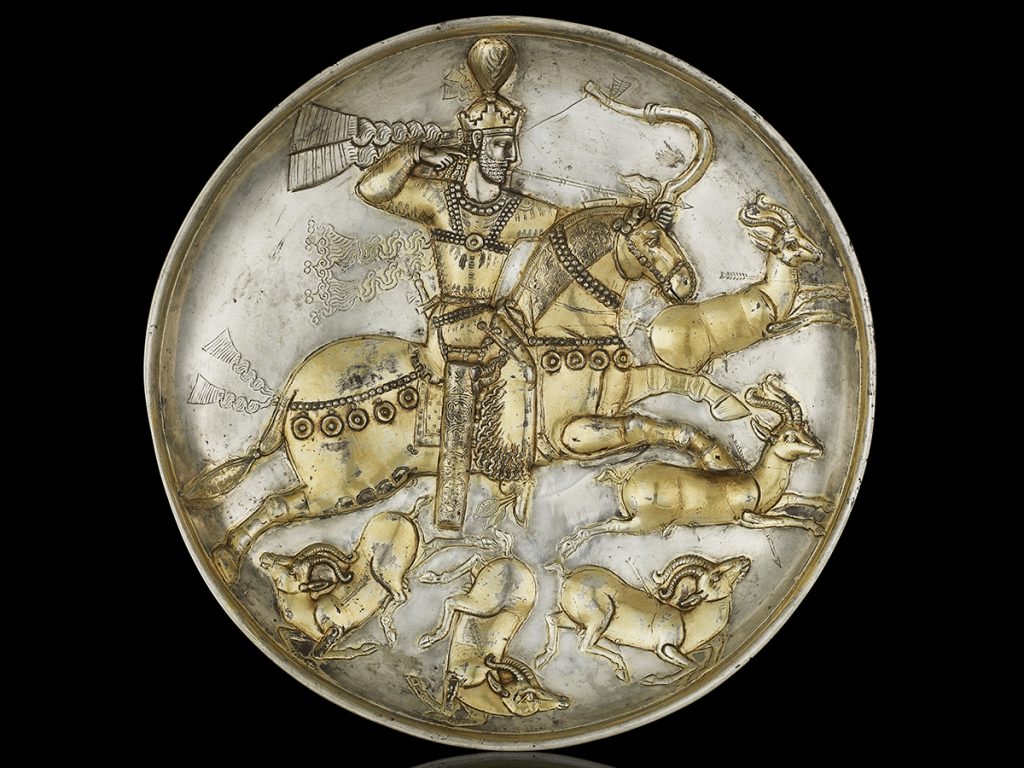
Sasanian Art
2. The Influence of Islam on Jewelry-Making
With the advent of Islam in the 7th century, Iranian art and craftsmanship entered a new era. While the use of figurative art in jewelry declined due to Islamic teachings, artisans began to incorporate more geometric patterns, calligraphy, and arabesques into their designs. Islamic motifs such as stars, crescents, and intricate patterns became a hallmark of Iranian jewelry during the Islamic Golden Age.
Safavid Dynasty (1501–1736)
The Safavid era marked a renaissance in Iranian art, including jewelry-making. Safavid rulers, like Shah Abbas, were patrons of the arts and encouraged the production of luxurious jewelry. During this time, Persian turquoise from Neyshabur gained prominence, and gold and silver filigree work became more refined. Artisans often used enamel work and inlay techniques, creating multi-layered, colorful designs that reflected the opulence of the era.
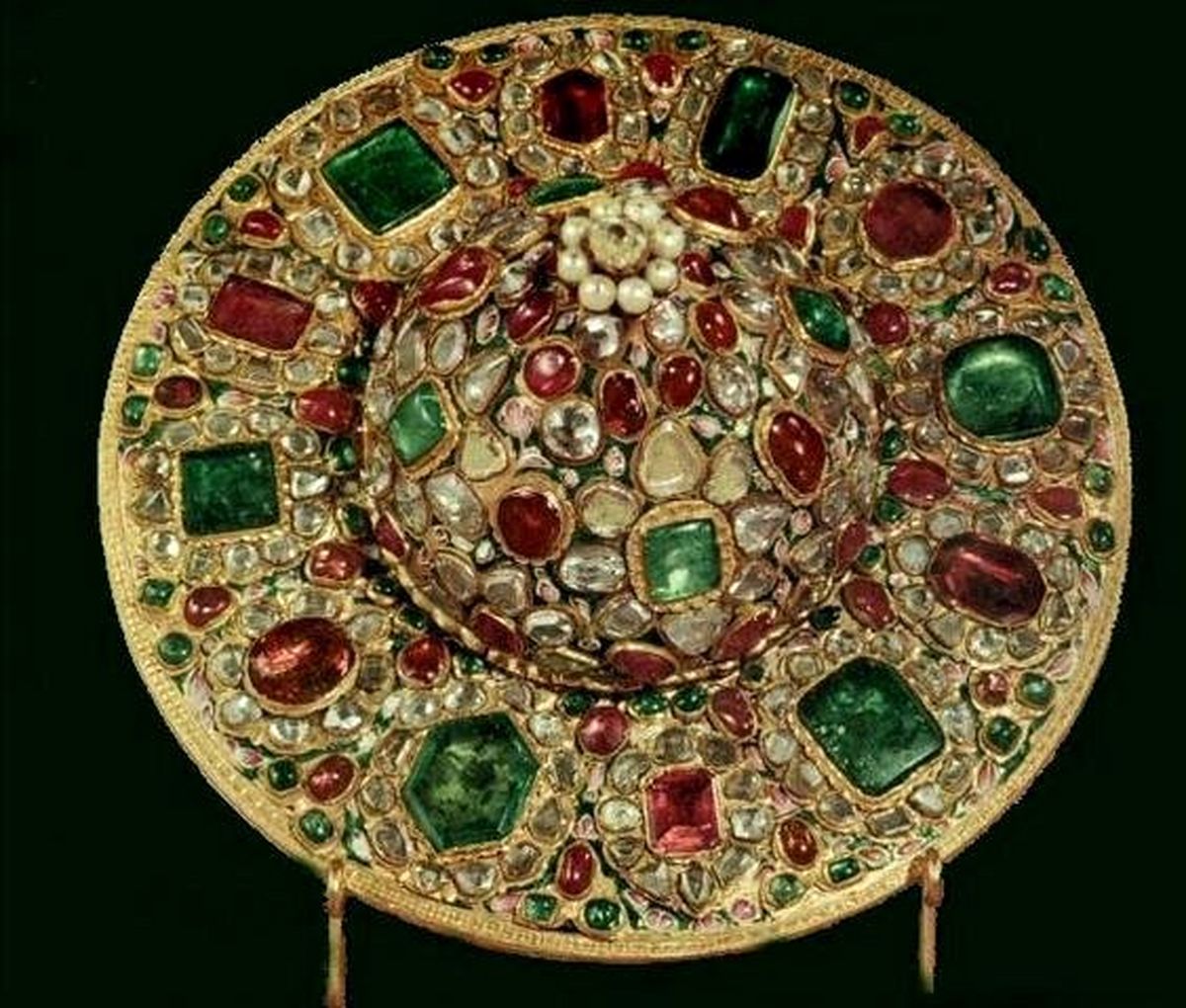
Safavid Dynasty
3. Modern Iranian Jewelry: A Blend of Tradition and Innovation
In more recent times, Iranian jewelry has continued to evolve, combining traditional techniques with modern styles. Many contemporary Iranian jewelers still draw inspiration from ancient motifs, incorporating Persian calligraphy, floral designs, and natural elements into their creations. Turquoise, agate, and lapis lazuli, stones that have been central to Persian jewelry for centuries, continue to be used in modern pieces.
Today, Iranian jewelry is celebrated not only for its historical significance but also for its craftsmanship and beauty. Many Iranian designers are gaining recognition on the global stage, blending Persian heritage with contemporary fashion to create unique, stunning pieces.
4. The Significance of Jewelry in Iranian Culture
Beyond its aesthetic appeal, jewelry has always held deep cultural and symbolic significance in Iran. For centuries, jewelry has been used in rituals, weddings, and as a symbol of status and wealth. In many Iranian families, jewelry is passed down through generations as cherished heirlooms, representing the continuity of heritage and tradition.
In the past, certain types of jewelry were believed to have protective powers. For example, turquoise was thought to protect the wearer from harm, while agate was seen as a stone of courage and strength. These beliefs, combined with the high level of craftsmanship, made Iranian jewelry a valuable and revered part of the culture.
5. Famous Iranian Jewelry: The Iranian Crown Jewels
No discussion of Iranian jewelry would be complete without mentioning the Iranian Crown Jewels, one of the most dazzling collections of royal jewels in the world. Housed in the Central Bank of Iran, this collection includes ornate crowns, thrones, swords, and tiaras, many of which are encrusted with diamonds, rubies, emeralds, and pearls. One of the most famous pieces is the Darya-ye Noor, a massive pale pink diamond that is one of the largest in the world.
The Iranian Crown Jewels are a testament to the opulence and grandeur of Persian royalty, as well as the extraordinary skill of Iranian jewelers throughout history.
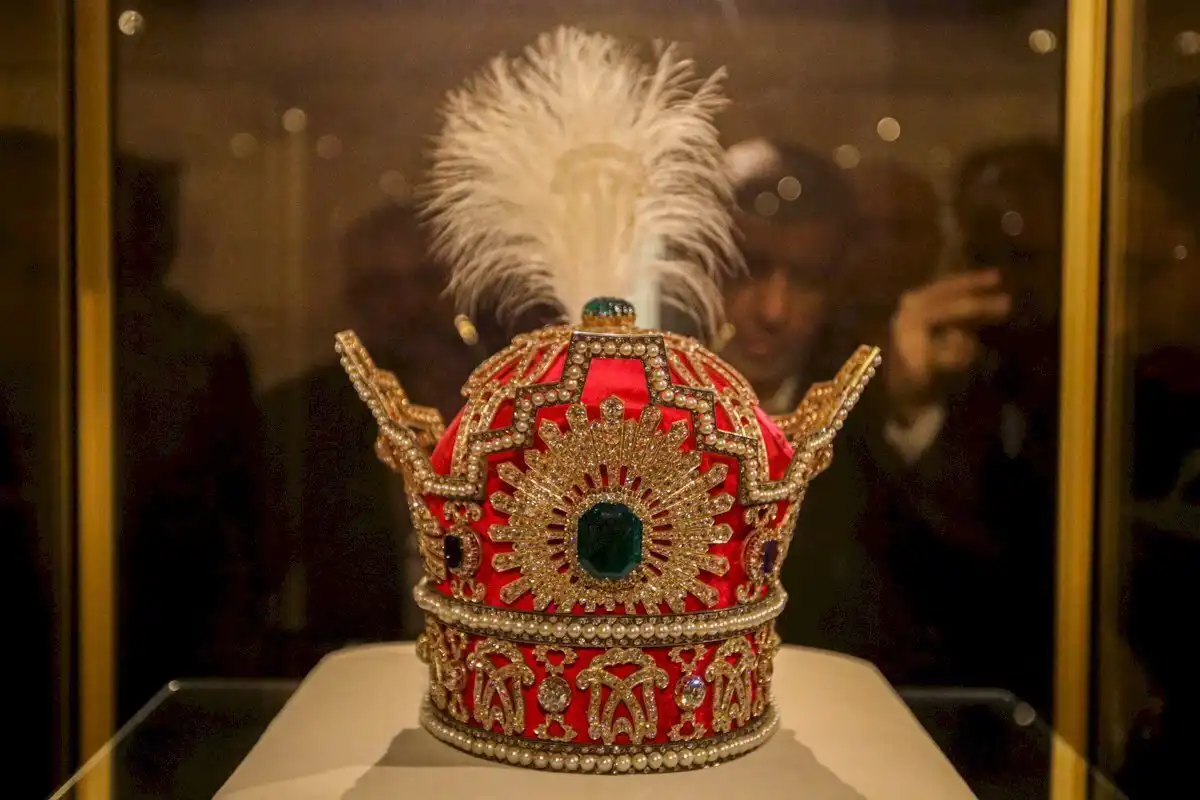
Iranian Crown Jewels
Conclusion: A Legacy of Artistry
The history of jewelry in Iran is a testament to the region’s rich cultural heritage and the skill of its artisans. From the ancient Elamite creations to the glorious Achaemenid and Sassanid treasures, and the innovations of modern designers, Iranian jewelry remains a symbol of beauty, power, and tradition.
Exploring the history of Iranian jewelry-making is like embarking on a journey through time, where each piece tells a story of craftsmanship, culture, and the enduring legacy of Persian art.
Incredible Iran offers authentic Iranian jewelry and other treasured artifacts that bring you closer to this legacy. Explore our collection today to discover the timeless beauty of Persian craftsmanship.


